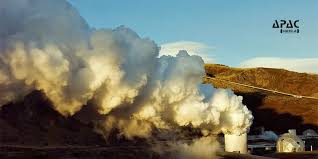Bhargavastra: India’s Indigenous Anti-Drone Weapon System
- 18 May 2025
In News:
India has developed 'Bhargavastra', a cutting-edge indigenous weapon system designed to neutraliseenemy drones, including drone swarms. It has been developed by Solar Defence and Aerospace Limited (SDAL), marking a major advancement in India’s drone warfare capabilities.
Key Features:
- Type:A multi-layered anti-drone system using micro-rockets and guided micro-missiles.
- Detection & Destruction Range:
- Detects drones from 6–10 km using radar.
- Destroys drones up to 2.5 km away.
How It Works:
- Layer 1:
- Unguided micro-rockets target drone swarms.
- Each rocket has an effective kill radius of 20 meters.
- Layer 2:Guided micro-missiles provide precision strikes on individual drones.
- Additional Features:Jammers and spoofers to confuse and disable drones electronically.
Successful Testing:
- Date & Location:Conducted on May 13, 2025, at the Seaward Firing Range, Gopalpur, Odisha.
- Results:
- Three tests: two with single rockets, one with two rockets fired within two seconds.
- All rockets hit their intended targets successfully.
Technological Components:
- Integrated Command and Control Centre
- High-resolution cameras and infrared sensors
- Real-time battlefield awareness system
Operational Versatility:
- All-Terrain Capability:Effective even in high-altitude zones above 5,000 metres.
- User Base:Can be deployed by Indian Army, Air Force, and Navy.
- Modularity:System components such as radars and launchers can be configured based on operational requirements.
Significance:
- Strategic Defence Tool:Counters rising threats from low-cost drones and UAV swarms.
- Indigenous Development:Boosts the Make in India initiative in defence manufacturing.
- First-of-its-kind in India:Among the few operational drone defence systems globally with successful tests.
Ayurveda Day

- 18 May 2025
In News:
The Government of India has officially fixed September 23 as Ayurveda Day, replacing the earlier practice of celebrating it on Dhanteras, which follows a variable lunar calendar. This change, notified through a Gazette notification in March 2025, aims to bring uniformity and global visibility to Ayurveda observance.
About Ayurveda Day:
- Purpose:Ayurveda Day is observed to honour India’s ancient medicinal heritage and promote Ayurveda as a scientific, evidence-based, and holistic healthcare system rooted in preventive and sustainable wellness practices.
- New Fixed Date:Starting 2025, Ayurveda Day will be celebrated every year on 23rd September, coinciding with the autumnal equinox, a day when day and night are nearly equal, symbolizing balance—a core concept in Ayurvedic philosophy.
- Why the Shift?The previous observance on Dhanteras created logistical challenges due to its annual date fluctuation (between mid-October and mid-November). The new fixed date allows for better planning and consistent global celebrations.
- Symbolism of Autumnal Equinox:The equinox represents cosmic balance and harmony, aligning with Ayurveda’s emphasis on equilibrium between mind, body, spirit, and environment.
Ayurveda: Key Facts for UPSC
- Definition:Ayurveda, meaning the “Science of Life” (from Sanskrit Ayu = life, Veda = knowledge), is a traditional Indian medical system dating back over 5,000 years, with roots in the Atharva Veda.
- Core Principles:
- SwasthasyaSwasthyaRakshanam: Maintaining the health of the healthy
- AturasyaVikaraPrashamanam: Treating diseases in the sick
- Emphasis on natural healing, diet, seasonal routines, and mind-body balance
- Key Features:
- Focus on preventive healthcare
- Use of herbal medicines, detox therapies, yoga, and meditation
- Personalised treatment based on individual constitution (Prakriti)
Significance for Global Health:
The Ministry of AYUSH envisions Ayurveda Day as a global platform to promote India’s traditional knowledge system as a part of the international wellness movement. Health professionals, researchers, academic institutions, and global partners are encouraged to participate in its observance to integrate Ayurveda into broader healthcare dialogues.
Operation Black Forest
- 18 May 2025
In News:
One of India’s most extensive anti-Naxal offensives in recent years, Operation Black Forest, resulted in the elimination of 31 Maoists. The operation was conducted in the Kurraguttalu Hills, a strategic Maoist stronghold located on the Chhattisgarh–Telangana border.
Key Features of Operation Black Forest
- Type: High-intensity counterinsurgency operation
- Duration: 21 days
- Area of Operation:Kurraguttalu Hills (approx. 1,200 sq km), known for rugged terrain and dense forest cover
Objectives:
- Dismantle key Maoist bases and operational infrastructure
- Neutralize senior Maoist leadership
- Re-establish state control in insurgency-affected zones
- Contribute to the national target of eliminating Left Wing Extremism (LWE) by March 31, 2026
Security Forces Involved:
- Central Reserve Police Force (CRPF)
- CoBRA (Commando Battalion for Resolute Action) units
- Chhattisgarh Police, including:
- Special Task Force (STF)
- District Reserve Guard (DRG)
About Kurraguttalu (Karregutta) Hills
- Geographical Location: On the inter-state border of BhadradriKothagudem district (Telangana) and Sukma district (Chhattisgarh)
- Terrain Characteristics:
- Extends over 25–50 km
- Features include steep elevations (~5,000 feet), caves, waterfalls, and dense forest cover
- Topography ideal for guerrilla warfare and concealment
- Local Terminology: Referred to by tribal communities as “Black Hills” or “Carregutta”
Demographic & Socio-political Aspects:
- Inhabited by Koya, Gond, and Chenchu tribes
- Tribal communities have historically been vulnerable in the conflict zone, often caught between insurgents and state forces
Other Key Maoist-affected Regions
- Abujhmad (Chhattisgarh)
- Malkangiri (Odisha)
- Gadchiroli (Maharashtra)
These areas, like Karregutta, serve as critical Maoist corridors with difficult terrain and limited state presence, posing ongoing challenges to internal security operations.
India’s First Geothermal Production Well in Northeast

- 18 May 2025
In News:
In a significant advancement for clean energy in Northeast India, Dirang in Arunachal Pradesh has become the site of the region’s first operational geothermal production well. This marks a pivotal step in utilizing Earth’s internal heat for sustainable energy generation in the eastern Himalayas.
Project Details
- Location:Dirang, West Kameng district, Arunachal Pradesh
- Terrain: Eastern Himalayan region
Technology Used
- The project employs a closed-loop binary Organic Rankine Cycle (ORC) system, which captures subsurface geothermal heat for applications such as:
- Electricity generation
- Space heating
- Agricultural processing
- Reservoir Temperature: Approx. 115°C — optimal for direct-use geothermal systems.
- Drilling Approach: Low-impact precision drilling aimed at fault zones between quartzite and schist rock formations.
Institutional Collaboration
- Implementing Agency:Centre for Earth Sciences and Himalayan Studies (CESHS), Itanagar
- Supported by:
- Ministry of Earth Sciences, Government of India
- Government of Arunachal Pradesh
- International partners from Norway, Iceland, and Guwahati research institutes
Significance
- First-of-its-kind in the entire Northeast region
- Potential to make Dirang energy self-reliant through clean geothermal power
- Helps replace diesel and firewood in cold climates, reducing emissions
- Can enhance agricultural productivity and living standards in high-altitude areas
- Strengthens India’s geothermal potential (~10,600 MW), offering reliable base-load renewable energy unlike solar or wind
Stagflation and Banking Sector Risks in the U.S.

- 18 May 2025
In News:
In 2025, economic analysts are raising alarms over growing signs of stagflation in the United States and its potential to trigger a renewed banking crisis similar to the collapse of Silicon Valley Bank (SVB) in 2023.
Unrealized Losses in U.S. Banks
As of early 2025, U.S. banks are grappling with $482.4 billion in unrealized losses from securities investments, according to the Federal Deposit Insurance Corporation (FDIC). This marks a 32.5% rise from the previous quarter. The figure is approaching the $515 billion mark observed during the SVB crisis and could rise to $600–700 billion if interest rates hit 5%.
These losses are primarily linked to long-term securities like government bonds, whose prices have fallen due to rising benchmark 10-year Treasury yields, now exceeding 4.5%.
What is Stagflation?
Stagflation is a rare and difficult economic condition marked by:
- High inflation
- Stagnant or negative economic growth
- High unemployment
It complicates policymaking because:
- Tightening monetary policy (raising interest rates) to control inflation can worsen unemployment and slow growth.
- Loosening policy to boost growth can further fuel inflation.
Causes of Stagflation in 2025:
- Supply Shocks – Rising input costs (e.g., energy or tariffs).
- Tariff Hikes – New U.S. tariffs on imports have raised production costs.
- Policy Missteps – Uncoordinated fiscal and monetary measures.
Impacts on the Financial Sector
- Reduced Bond Values: High interest rates lower the market value of banks’ bond holdings.
- Risk of Bank Runs: Diminished asset values can trigger depositor panic.
- Credit Losses: Particularly in sectors like tech and venture capital where firms have weak earnings and poor debt coverage.
- Liquidity Crisis: A sudden negative news cycle could lead to another SVB-like collapse.
Experts warn that continued high interest rates could deepen banking stress and prolonged stagflation could amplify credit defaults.
